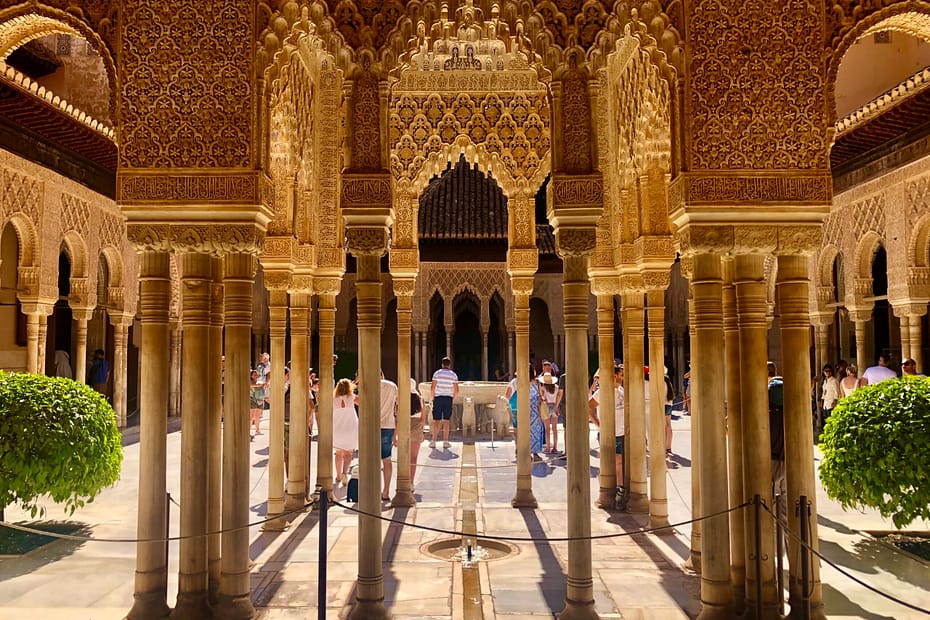The crown jewel of Spain’s Andalusia region is undoubtedly the historic city of Granada. Its medieval architecture and Moorish culture make it one of the “must sees” of southern Spain.
It is a small city that lays gracefully across the foothills of the Sierra Nevada mountains and boasts a rich history that dates to the Bronze Age.

Let it also be mentioned that it may be the greatest place to enjoy a cold sangria on a hot summer evening.
And, you can’t beat the view.

Sprawling above the narrow, cobbled streets of the old city, the hilltop fortress of the Alhambra can be seen from just about anywhere—its commanding walls fortifying a multitude of opulent palaces, patios and gardens that were built during the time of Nasrid rule.


That is to say, that the exquisite craftsmanship of the Alhambra’s niches, fountains, floors, walls, and everything else you can come up with, was being added to quite nicely until Queen Isabella decided that the last remaining Muslim-ruled state in the Iberian Peninsula “needed” to be conquered to satiate her own religious appetites.


The year: 1492.
And yes, this the same year that Queen Isabella sent Christopher Columbus on his westerly voyage to discover a trade route to India.
Anyway, back to Granada.

As you enter the city, you’ll want to do a better job of utilizing your navigation app than we did… and not find yourself at a cliffside monastery at the end of the the narrowest road known to man. But I digress.



To visit the city and not walk the interior of the Alhambra would be a mistake. It’s awe-inspiring. But it is also enter-by-ticket only, and tickets disappear fast during high-season. For this reason, one should book entry online—days in advance of the intended visit.


When wandering the Albaicin quarter of the old city, a world of wonders awaits you: restaurants and bars, shops and markets, bustling plazas, and street-side tables with ice-cold cervezas.

It is, in every way, a full-on southern Spanish experience.


